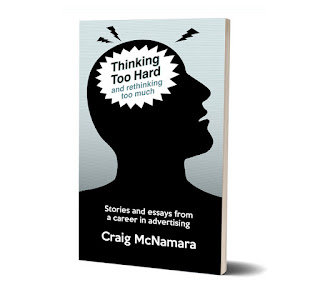What's it like to work in advertising? It's like this.

What's it like to create advertising for a living? What’s it like to work at an ad agency? What’s to like – or not like – about certain ad campaigns? What do I like in how advertising in portrayed in movies and TV? Find out here, in essays, articles, podcast scripts, and blog posts – nothing too heavy and written with wit and style. Like the writing on this blog? It's like that, and more. $9.99 softcover – $4.99 ebook Read excerpts and order here .






